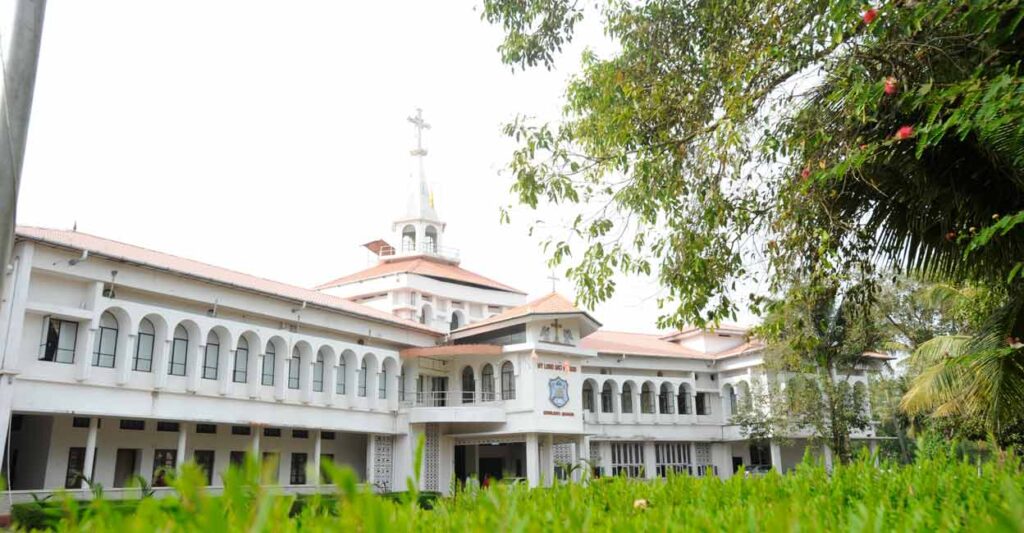
In the early 20th century, government policies in Australia aimed to keep non-Europeans out. While the measures of so-called “White Australia” at the time were mainly aimed at the Chinese and Pacific Islanders, it was almost impossible for Indians to settle in the country. In 1928, when Sydney hosted the International Eucharistic Congress, an invitation was extended to the 51-year-old bishop of the Syro-Malabar Catholic Church in Kottayam, Bishop Alexander Chulaparambil.
Born in Kumarakom in 1877, Chulaparambil had been Bishop of Kottayam since 1923 and had traveled to many parts of the world at the time of the Sydney Congress. Like many other Travancore Catholics, he had studied for the priesthood at the Jesuit seminary in Kandy, Sri Lanka (then Ceylon), before being ordained a priest in 1906.
In 1922, Chulaparambil attended the Eucharistic Congress in Rome, where he developed a close friendship with the Archbishop of Brisbane, Rev Duhig. “This friendship was an important factor in his decision to accept the invitation to be present at the next Congress in Sydney,” wrote the Catholic Weekly in August 1928.
Accompanying Chulaparambil to Australia in 1928 was his secretary, Father Thomas Tharayil, a priest educated in Rome. They embarked on the British India Steam Navigation Company’s SS Comorin from Colombo to Sydney, and in all likelihood became the first Malayalis to visit Australia.
The Indian cleric received quite a bit of coverage in the local press. “The arrival of Bishop Alexander Chulaparambil from India provoked a mixed response: much of the secular press referred to the bishop and his chaplain as ‘dark-skinned’ and ‘natives’ and the Australian Communist Party denounced the presence of non-Indians. religious. “White delegates in the country are a contradiction to the White Australia Policy,” Sydney-based historian Samantha Frappell wrote in an article for a website run by the State Library of New South Wales.
“The bishop, in his black episcopal cassock with purple trim, was a picturesque figure when he landed yesterday from Comorin,” reported the Sydney Morning Herald on August 24, 1928. “As already stated, he will probably be the only dignitary in the hierarchy of India in Congress, and is probably the first of the native bishops of India to visit Australia.”
When a journalist from Sydney’s illustrious newspaper wanted to speak to Chulaparambil and get a rare Indian voice on the country’s political situation, the bishop refused. He told the newspaper that things were complicated in the country by caste and dialect differences.
At that time, the princely state of Travancore had six lakh Catholics and the church had more or less Indianised. Chulaparambil told the newspaper that Indians were gradually assuming senior positions in the church throughout the country.
Australia’s religious press was impressed with Chulaparambil. “A native Indian, Bishop Chulaparambil, who speaks admirable English, shows a wide knowledge of Australia in its relation to Church affairs,” wrote the Catholic Weekly.
The secular media seemed fascinated by the Malayali bishop’s attire. The Sun, Melbourne, wrote: “The Rev. Alexander Chulaparambil, Bishop of Kottayam, Travancore, India, made a gay splash of color against the gray with which Melbourne covered his face today, for he wore ceremonial robes, rich in splashes. . of green and red. He normally appears in a red fez and a black cassock, with purple trim.
Little is known of Chulaparambil’s contribution to the Congress and his visits to places such as Brisbane, where he went to spend time with his close friend, the archbishop. The Queensland Times called it “outstanding in importance”.
The Malayali bishop had also wanted to visit Tasmania and New Zealand, but this writer could find nothing in the archives about such visits. This visit may never have happened if not for a stroke of fortune or divine will, based on what one would like to believe.
In April 1928, as a mass began in Kottayam, lightning struck the cross on the altar of a church. “Several Roman Catholics were about to say their prayers when tremendous rain fell, followed by lightning and thunder,” the Bombay Chronicle reported on April 12, 1928. “The priest and about thirty others received heavy shocks,” the newspaper reported . he said, adding that five people died.
Similar reports in the international press mention the tragedy, but not which of the city’s churches suffered the tragedy. If it happened in the Syro-Malabar main church, it was a near miss for Bishop Chulaparambil and Father Tharayil. If Bishop Chulaparambil were to write about his time in Australia, it would be fascinating reading.
(Ajay Kamalakaran is a multilingual writer based primarily in Mumbai)